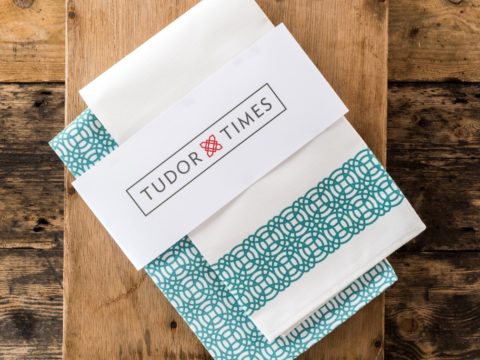Marguerite of Austria: Life Story
Chapter 13 : European Rivals
By late 1518 Maximilian’s health was failing, and he and Marguerite were both determined that Charles should succeed him as emperor. As the office was elective, now was the time to persuade the electors that Charles was their man – and persuasion required hard cash. The alternative was François I, who was extremely eager to oust the Hapsburgs. Henry VIII of England was a wild-card: he did not have the resources to either buy the title, or hold it if had gained it, but it was useful to muddy the waters, and he and his chief minister, Cardinal Wolsey, made various promises.
Charles was, apparently, concerned that Maximilian and Marguerite were promising too much – neither his subjects in Spain or in the Low Countries would ever give him enough subsidies to pay the promised bribes. In this he was right: he eventually won the contest, but was more-or-less insolvent for the rest of his life, despite the vast wealth pouring in from the Spanish Americas.
Maximilian died on 12th January 1519. With him went the last of the men who had dominated the late fifteenth and early sixteenth centuries – Henry VII of England, Ferdinand of Aragon, Louis XII of France, and Maximilian himself. Europe was now in the hands of Henry VIII; Charles, who now became the Emperor Charles V, as well as King of Spain and Duke of Burgundy; and François I of France. The rivalry between these three was more intense, more personal, and even more destructive, than had been that of their predecessors.
Marguerite’s grief at the loss of her father was sincere – they had worked closely together, and he had respected her abilities, giving her a level of power and independence not many women enjoyed. She marked his death with the composition of a poem.
From the initial difficulties at the beginning of his majority, Charles had come to a deep appreciation of Marguerite’s talents. He thanked her warmly for her efforts to gain his election as emperor and in recognition of support he granted her the province of Mechelen and 200,000 golden florins in January 1520.
Charles’ Burgundian subjects were pleased with his election as emperor, which Marguerite formally announced through letters to the various provinces at the end of June 1520. His Spanish subjects were less pleased with his performance – they felt Charles to be a foreigner, and were angry that he had installed his fellow Flemings to high office in Spain. The appointment of his former tutor, Adrian of Utrecht, as regent when he departed Spain to return to the Low Countries and visit the empire caused outrage.
Charles returned to the Low Countries via England, where he met his aunt Katharine, (Marguerite’s former sister-in-law) her husband, Henry VIII, and their daughter, the four-year-old Princess Mary. Part of the reason for Charles’ visit was to undermine the alliance between England and France, which had been sealed with the betrothal of Princess Mary to the Dauphin in 1518.
Henry VIII and François had agreed to meet in person during the summer of 1520 to celebrate their alliance and in theory, at least, end the centuries of enmity between the countries. Charles was eager to undermine this rapprochement, and despite Princess Mary’s betrothal, and his own to the dauphin’s sister, Princess Charlotte of France, he and Henry held informal discussions about breaking these alliances so that Charles could marry Mary. They also agreed a further meeting, immediately after Henry’s conference with François.
Leaving England, Charles arrived at Vlessingen on 1st June 1520, travelling on to Bruges where he was met by Marguerite, and his younger brother, Ferdinand. Marguerite was, presumably, delighted to see her nephew after an absence of four years. In the intervening time he had grown from the rather unprepossessing youth of whom no-one had seemed to expect much, heavily dependent on Chièvres, to a king who was beginning to assert his power, and think for himself. He addressed his States-General, and publicly praised and thanked Marguerite for her care of the state in his absence.
The meeting between Henry VIII of England and François I of France, known as the Field of Cloth of Gold, took place in June at Ardres. The kings were accompanied by their respective wives, Katharine of Aragon and Claude of France, as well as Charles’ former betrothed, the older Princess Mary of England, who was now Duchess of Suffolk. Despite all of the pageantry and expense, the meeting did not accomplish much, and Charles immediately sought to undermine whatever it did accomplish. Henry and Katharine left Ardres, but instead of returning to England, crossed into Charles’ territory at Gravelines, there to be met by Marguerite and Charles.
There is no record of the meeting of Katharine and Marguerite, but it may well have been an emotional one. Although they had corresponded, the last time they had seen each other was in 1499, when they were both still mourning the loss of Prince Juan. During the discussions, it was proposed that both the French marriages would be broken off, and Charles would marry Henry’s daughter. The terms of this agreement were to be kept secret until both monarchs could prepare themselves for a joint war with France. Henry did not commit to this, as he was unwilling to be the first to break a treaty.
After a couple of days in Gravelines, Marguerite and Charles accompanied Henry and Katharine to Calais for a further two days, before returning to Aachen/Aix-la-Chapelle where Charles was to be crowned as King of the Romans and Holy Roman Emperor-elect. He would not truly be emperor until crowned by the Pope.
Marguerite of Austria
Family Tree
